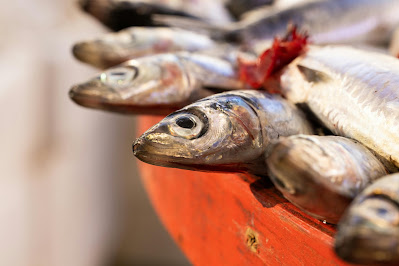As an amazon associate, I earn from qualifying purchases.
Introduction
In today's diverse culinary landscape, the prevalence of food allergies and intolerances has become a significant concern for individuals seeking to maintain a healthy lifestyle. From gluten intolerance to nut allergies, these dietary restrictions can pose challenges when it comes to dining out, grocery shopping, and even preparing meals at home. However, with the right knowledge and strategies, navigating this complex world becomes manageable, empowering you to make informed choices and ensure your well-being.
Understanding Food Allergies and Intolerances
Before delving into the intricacies of managing food allergies and intolerances, it's essential to grasp the fundamental differences between these two conditions.
Food Allergies
A food allergy is an immune system reaction that occurs soon after consuming a particular food. Even a tiny amount of the offending food can trigger symptoms ranging from mild (rashes, hives, nausea) to severe (difficulty breathing, anaphylaxis). Common food allergens include peanuts, tree nuts, fish, shellfish, eggs, and soy (Source: [Food Allergy Research & Education](https://www.foodallergy.org/resources/what-food-allergy)).
Food Intolerances
Unlike allergies, food intolerances do not involve the immune system. Instead, they are digestive issues caused by the inability to break down certain foods or compounds, such as lactose (in dairy products) or gluten (in wheat, barley, and rye). Symptoms of food intolerances can include bloating, gas, diarrhea, and abdominal pain (Source: [National Institutes of Health](https://www.niddk.nih.gov/health-information/digestive-diseases/food-intolerances)).
Navigating the World of Food Allergies and Intolerances
Once you've identified your specific dietary restrictions, the journey to adapting your lifestyle begins. Here are some practical tips to help you navigate the world of food allergies and intolerances:
Reading Labels Carefully
When shopping for groceries, reading ingredient labels meticulously is crucial. Look for allergen statements, and familiarize yourself with alternative names for common allergens (e.g., casein for milk, semolina for wheat) (Source: [Food Allergy Research & Education](https://www.foodallergy.org/resources/reading-food-labels)).
Dining Out Safely
Eating out can be a minefield for those with food allergies or intolerances. Always inform your server about your dietary restrictions, and don't hesitate to ask questions about ingredients and preparation methods. Many restaurants now offer allergen-friendly menus or can accommodate special requests (Source: [Centers for Disease Control and Prevention](https://www.cdc.gov/healthyschools/foodallergies/pdf/13_243135_A_Food_Allergy_Book_Web_508.pdf)).
Meal Prepping and Cooking at Home
One of the best ways to ensure complete control over your diet is by preparing meals at home. Experiment with allergen-free recipes, invest in specialized cookbooks, and explore alternative ingredients to satisfy your cravings (Source: [Academy of Nutrition and Dietetics](https://www.eatright.org/food/resources/food-allergies-and-intolerances)).
Building a Support System
Navigating food allergies and intolerances can be emotionally and socially challenging. Seek support from family, friends, and online communities who understand your struggles. Educate those around you about your dietary needs, and don't be afraid to advocate for yourself (Source: [Food Allergy Research & Education](https://www.foodallergy.org/resources/support-communities)).
Well... wrapping up!
Embracing a lifestyle that accommodates food allergies and intolerances requires patience, diligence, and a willingness to adapt. By arming yourself with knowledge, reading labels carefully, exploring alternative ingredients, and building a supportive network, you can confidently navigate the world of dietary restrictions while prioritizing your health and well-being. Remember, with the right mindset and strategies, you can still enjoy delicious, satisfying meals while maintaining a safe and fulfilling culinary experience.

.jpg)

















